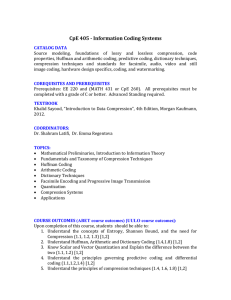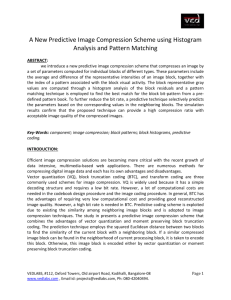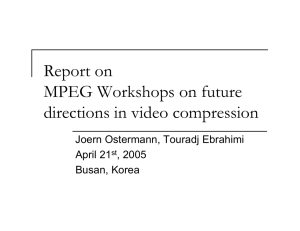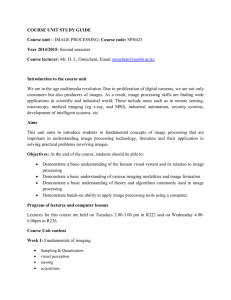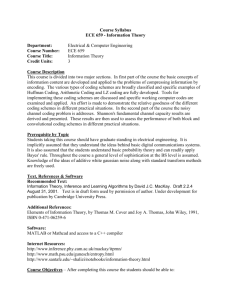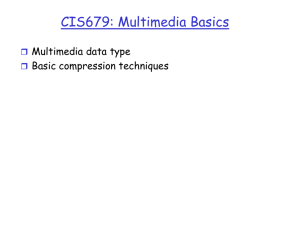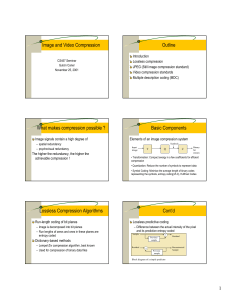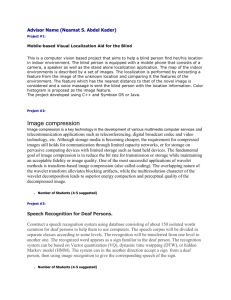CMP4104 Digital Image and Video Processing
advertisement
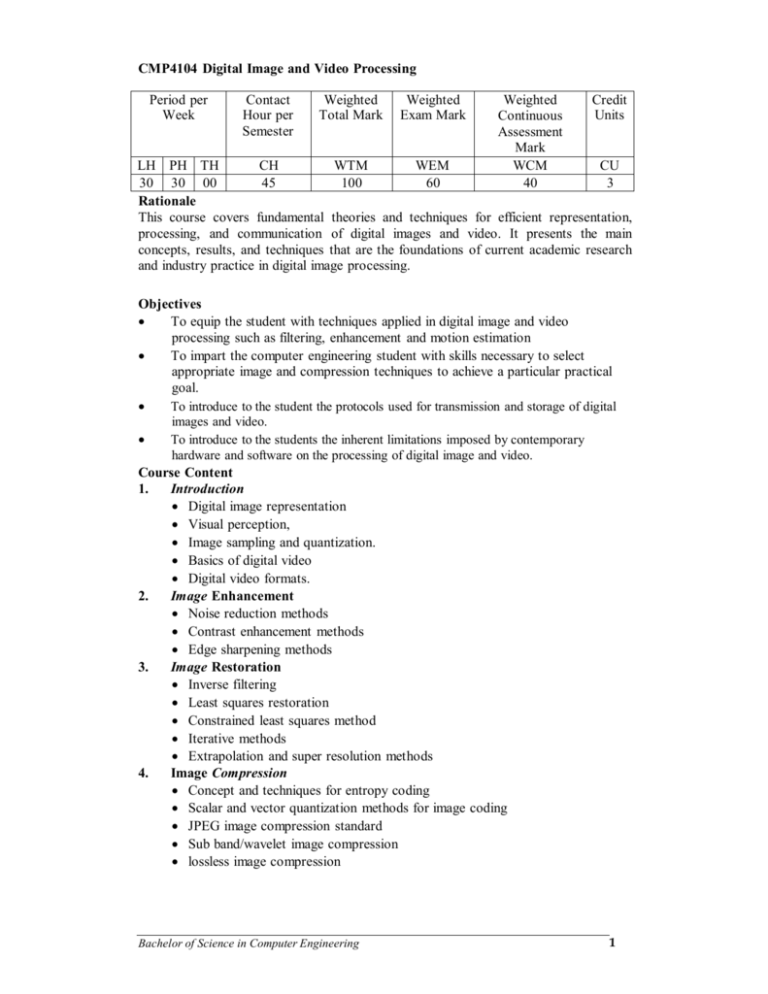
CMP4104 Digital Image and Video Processing Period per Week Contact Hour per Semester Weighted Total Mark Weighted Exam Mark Weighted Continuous Assessment Mark WCM 40 Credit Units LH PH TH CH WTM WEM CU 30 30 00 45 100 60 3 Rationale This course covers fundamental theories and techniques for efficient representation, processing, and communication of digital images and video. It presents the main concepts, results, and techniques that are the foundations of current academic research and industry practice in digital image processing. Objectives To equip the student with techniques applied in digital image and video processing such as filtering, enhancement and motion estimation To impart the computer engineering student with skills necessary to select appropriate image and compression techniques to achieve a particular practical goal. To introduce to the student the protocols used for transmission and storage of digital images and video. To introduce to the students the inherent limitations imposed by contemporary hardware and software on the processing of digital image and video. Course Content 1. Introduction Digital image representation Visual perception, Image sampling and quantization. Basics of digital video Digital video formats. 2. Image Enhancement Noise reduction methods Contrast enhancement methods Edge sharpening methods 3. Image Restoration Inverse filtering Least squares restoration Constrained least squares method Iterative methods Extrapolation and super resolution methods 4. Image Compression Concept and techniques for entropy coding Scalar and vector quantization methods for image coding JPEG image compression standard Sub band/wavelet image compression lossless image compression Bachelor of Science in Computer Engineering 1 5. 6. Motion analysis: Real vs apparent motion Motion modeling, Spatial-temporal constraint methods (optical flow equation), Block-matching methods Mesh-based methods Global motion estimation Multi-resolution approach Motion segmentation Video compression: Information bounds for lossless and lossy source coding Transform coding, predictive coding Motion compensated coding Scalable video coding Multiview/stereo/mesh coding Video compression standards and Applications Video Watermarking Learning Outcomes On completing this course the student should be able to: Understand the basic information of Video and images Understand the various compression techniques and work with either raw or compressed data Understand the frequency components of image and video data Implement data compression techniques Work with Image or Video File formats Perform motion-compensated predictive coding of video using forward, backward, and bidirectional predictive methods. Select an appropriate encoding method for each macro block in a video sequence. Know basic features of prominent image and video compression standards. Recommended and Reference Books [1] Y. Wang, J. Osternmann, Y. Zhang , 2002, Video Processing & Communication, Prentice Hall, ISBN 0-13-017547-1 [2] A. Murat Tekalp , 1995, Digital Video Processing , Prentice-Hall, ISBN 0-13190075-7 [3] F. Halsall, 2001, Multimedia Communications, Addison-Wesley, ISBN: 0201398184 [4] B. J. Sheu and M. Ismail, 1998, Multimedia Technology for Applications, IEEE Press, ISBN: 0780311744 [5] M-T & Reibman ,2001, Compressed Video Over Networks, Marcel Dekker,New York. [6] David A. Forsyth and Jean Ponce , 2002, Computer Vision: A Modern Approach , Prentice Hall; US ed edition , ISBN-10: 0130851981 [7] Rafael C. Gonzalez & Richard E. Woods , 2002, Digital Image Processing, Addison- Bachelor of Science in Computer Engineering 2

